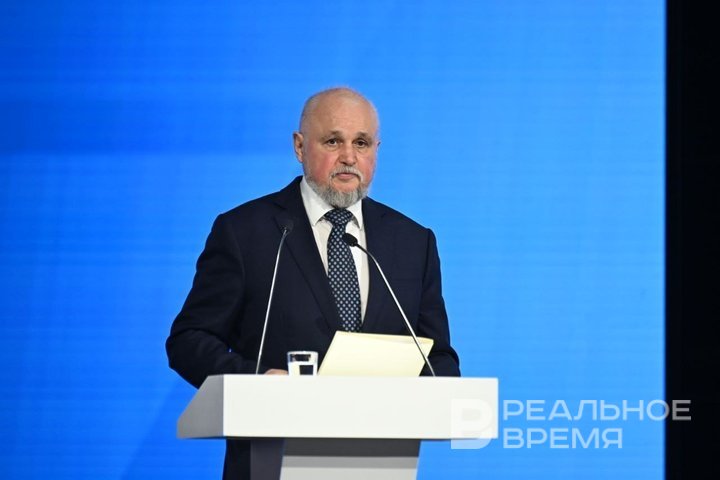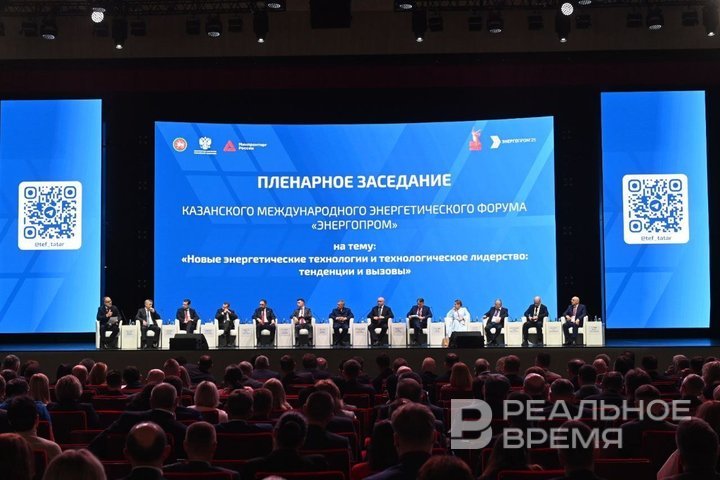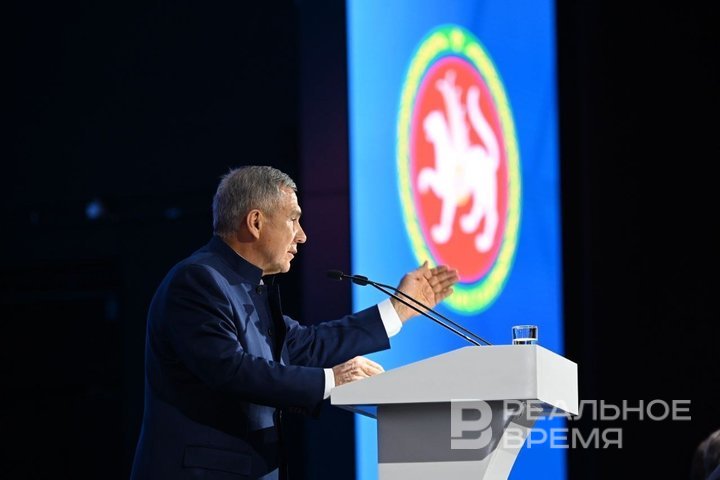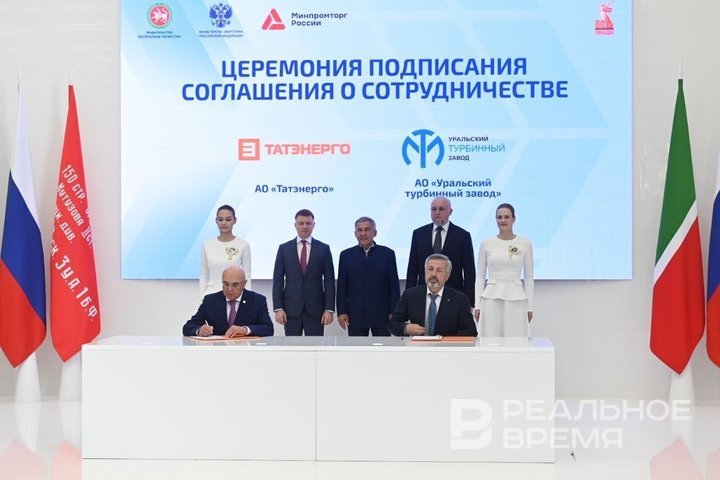Towards GOELRO 2.0: Sergey Tsivilev aims to revive the era of cheap energy?
Generators asked to mitigate fines for delaying the commissioning of stations with localised power equipment

“We inherited an energy system with one of the lowest electricity costs in the world. We should do the same as the creators of the GOELRO plan did," Russian Energy Minister Sergey Tsivilev called for a breakthrough at the plenary session of the Energoprom International Forum, which started at Kazan Expo on 2 April. Russia's energy system is facing a serious power deficit, with only 58 GW of the required 88 GW operational under the “old rules," and an additional 8 GW considering localization efforts. Due to the high cost of domestic GTU generators, they recently refused to enter into a KOMMod, paying a fine of 5.5 billion rubles (1 billion had to be paid to Nizhnekamsk CHP). “Generators and equipment manufacturers must share the responsibility equally," urged Alexandra Panina, the head of the Council of Power Generators and Strategic Investors in Energy. Read the details in the material of Realnoe Vremya.
Safety margin of Russian energy system is running out
This is not the first time in history that Russia has experienced a shortage of electricity, but this time it is complicated by the disease of rapid economic growth. Against this background, the safety margin of the Russian energy system is running out, the participants of the plenary session of the International Forum Energoprom, who gathered at the Kazan Expo site, said on 2 April.
The main guest of honor was Sergey Tsivilev, Minister of Energy of the Russian Federation, who was appointed in May last year after the change of the previous government of the Russian Federation. And it seems that he has embarked on radical changes in the Russian electric power industry. At least his rhetoric strongly contrasts with previous statements by the leadership of the Ministry of Energy of the Russian Federation, who warned of the end of the “era of cheap energy.” The new boss, on the contrary, is determined to bring back the era of cheap energy.

“You remember, we had a GOELRO plan before the war: it was about electrification of the whole country. This is the greatest project that was implemented in the shortest possible time. And then there were exactly the same problems: there wasn't enough money, there wasn't enough technology, there were sanctions, everything was the same. In the post-war period, the construction of a unified energy system began. We were given one of the lowest electricity prices in the world. What is the cost of a kilowatt hour that we will pass on to our children and grandchildren? We must do exactly the same as the two winners, our great predecessors, did," he said from the first minutes of the plenary session.
Perhaps, his message may seem unrealistic, and the course itself could not but please industrialists who are suffering costs due to the unpredictable increase in the cost of electricity. In addition, back in December, the leadership of the Ministry of Energy gave a clear signal that it was preparing for further growth. “Energy costs money. The era of cheap energy is over. Let's get used to it. It's not up to fat right now," said one of his deputies, who oversaw the electric power industry. It's about Evgenia Grabchak. He claimed that the new generation would only pay off if the cost of electricity increased by 2-3 times. This quote quickly spread, causing a stir among large consumers.
“Russia continues to use the unified energy system, which was built in the Soviet years, but its capabilities are coming to an end," said Sergey Tsivilev, Minister of Energy of the Russian Federation.
According to him, there is now a new challenge to form a new energy system that will be passed on to the next generation. “It is on this system, on what we will do with you, that the competitiveness of our enterprises in the future and the level of well-being of residents will depend," he stressed.
Rustam Minnikhanov, the rais (head) of the Republic of Tatarstan, said that the republic had invested 170 billion rubles in infrastructure modernisation over 5 years. “The growth of electricity generation in 2021 exceeded 30 percent and reached 31.3 billion kilowatt-hours, which is an indicator of the reliability of the energy system and strengthening energy security," the head of the republic said.

Localisation will help to update generation
We are talking about the general scheme for the development of the energy system until 2042, which is expected to be adjusted this autumn. They are related to clarifying the status of investment projects that were supposed to be implemented within the framework of the competitive selection of COMMod, but were postponed to a later date. The reason for the tense situation in the renewal of capacities is related to the introduced requirements for the localisation of gas turbine units of GTU, that is, generators are required to use new non-rolled GTU during the construction and repair of stations.
The general plan for the development of the energy system until 2042 provides for the construction of new capacities of 88 GW, of which 58 GW has been launched. Important note: these stations were launched under the DMP agreements in 2007-2014, when generators were allowed to purchase foreign GTU, said Alexandra Panina, the head of the Council of Electricity Producers and Strategic Investors of the Electric Power Industry.
The renewal of capacities took place according to the “old rules” quite smoothly and calmly. But the subsequent 8 GW stations were built taking into account localisation, that is, the generators are required to use domestic GTU. “Localisation is a big challenge. No more than 10 countries in the world can produce gas turbines with a high level of localisation, and Russia is one of them," she noted.

According to her, new plants of 5-6 GW per year will have to be commissioned in the coming years, and “these are fantastically huge figures.” “And, most likely, we will have to introduce even more, because the general scheme provides for an increase in consumption," she added.
Fines in half?
However, due to the postponement of delivery dates and deterioration of parameters, generators are subject to huge fines. “New equipment cannot pass without failures and problems. And here the generators are vulnerable. The market requires the equipment to be commissioned on time and with the necessary economic indicators. If the equipment has increased in price, we are told that this is your problem. Plus, the generator pays specific fines, accidents — fines again. It seems that the state is implementing a power engineering program, and the responsibility lies with the generator," Alexandra Panina complained. When the wholesale market charges a fine for a delay in the delivery of equipment, the generator cannot transfer it to the supplier of the GTU.
Partly for this reason, the generators have recently abandoned the implementation of projects on KOMMod, paying a fine of 5.5 billion rubles. Among them was Nizhnekamsk CHPP, which paid a fine of 1 billion rubles for refusing to participate. “27 projects were selected as part of the KOMMod. Of these, 8 GW were introduced. But recently, a refusal was received at facilities for about 3 GW. They haven't done anything yet, but they've already paid 5.5 billion rubles. The reason is the increase in the cost of equipment, plus the rate has increased," Alexandra Panina said. It is necessary to balance the responsibility of generators and equipment manufacturers," she urged to mitigate penalties.
Nevertheless, the meeting ended on a positive note. Prior to the meeting, Tatenergo CEO Rauzil Khaziev signed a cooperation agreement with Mikhail Lifshits, Chairman of the Board of Directors of Ural Turbine Works JSC, to modernise the Zainskaya GRES (included in the program until 2042).

The signed agreement provides for the intention of the parties to implement a CCGT construction project at Zainskaya GRES with a total capacity of 1 GW according to the technological scheme of two combined-cycle double-gas units, for the implementation of which it is planned to use four steam turbine units with a capacity of 160 MW each produced by Ural Turbine Works JSC. The project is planned to be implemented in two phases with a delivery period of 2 turbines in 2028 and two turbines in 2029. Nevertheless, it was possible to weaken localisation for certain objects a little, Rauzil Khaziev replied when asked about the usefulness of localisation.